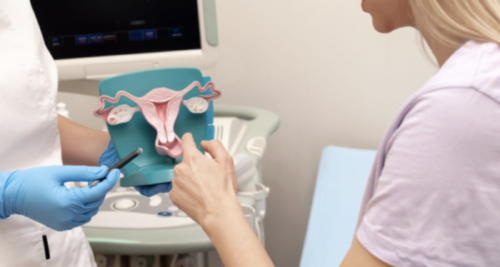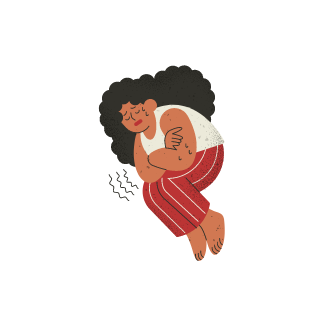
Adenomyosis
What is adenomyosis?
Adenomyosis is a condition in which the uterine lining (endometrium) protrudes through the muscle wall of the uterus. A person suffering from adenomyosis can experience discomfort and have problems with menstruation. This is not a life – threatening condition and it is considered benign. However, the symptoms can have a significantly negative effect on the quality of life of those with it.
What are the symptoms of adenomyosis?
Common adenomyosis symptoms include:
- Painful menstrual cramps
- Abdominal bloating
- Heavy and prolonged menstrual bleeding
- Pain during intercourse
- Blood clots which pass during menstruation
- Enlarged uterus

What causes adenomyosis?
The cause of adenomyosis is unknown, however, it typically goes away after menopause, which suggests that the cause is hormone related.
Adenomyosis vs Endometriosis
Adenomyosis and endometriosis share similarities and have various similarities. They are both disorders of the uterine lining, but they develop differently and have symptoms that are different from one another.
In endometriosis : endometrial-like tissue that grows outside of the uterus is commonly found in the ovaries. It then becomes part of the menstrual cycle and may cause pain and affect fertility.
In adenomyosis : endometrial-like cells grow within the uterus’ muscles. These cells also follow the menstrual cycle and may cause pain and heavy bleeding due to the uterus wall thickening. You can have both disorders at the same time.
How do you treat adenomyosis?
As adenomyosis usually goes away after menopause, treatment options depend on how old you are and if you have finished having children. For women nearing menopause, anti-inflammatory medications such as ibuprofen can be given to manage the pain. If these are taken in the days leading up to menstruation, bleeding should be lighter. Milder symptoms can be dealt with using over-the-counter pain relief and heat packs to help with the cramps. Certain hormone contraceptive can also sometimes help with symptoms of heavy bleeding and cramps.
